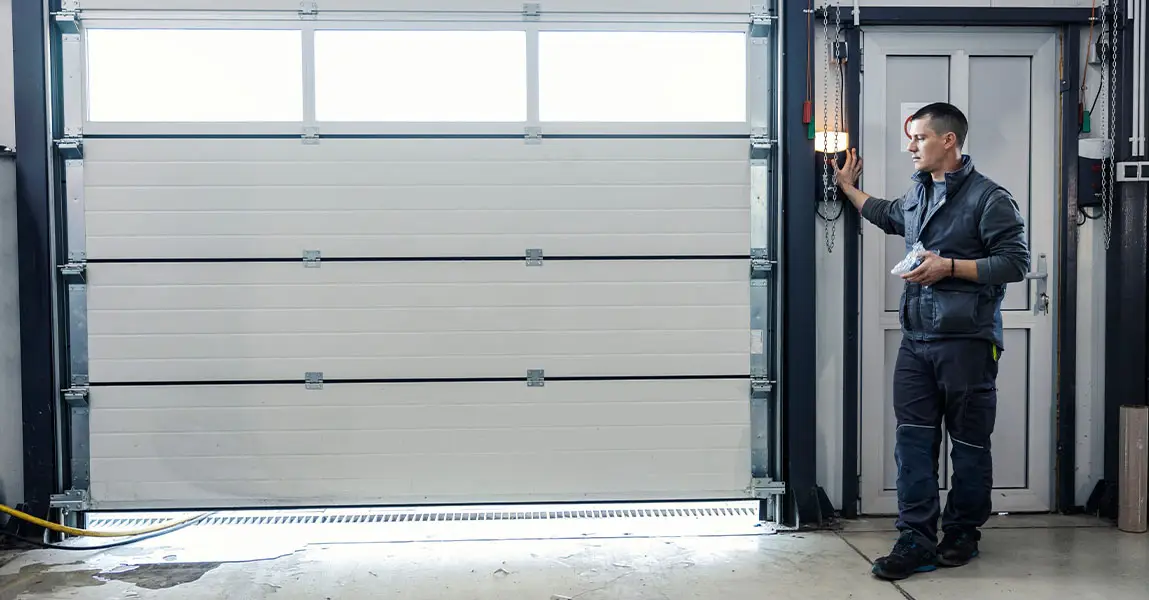Iron railings have always combined safety with beauty, but design preferences change every few years. In 2025, we’re seeing a clear shift toward clean geometry, durable finishes, and artistic touches that match both modern and traditional homes. As we work on projects at Metalex INC, we notice how new materials and fabrication methods are reshaping expectations. Homeowners want railings that enhance their space without overwhelming it. The best designs balance simplicity and craft, creating railings that feel timeless yet distinctly modern.
Embracing Minimalism in Iron Railing Design
Minimalism continues to influence how railings are built and styled. Instead of ornate scrolls and heavy detailing, many homeowners now prefer straight lines and open forms. These designs allow light to pass through easily and make smaller areas feel larger. Clean metal structures also pair well with contemporary interiors that feature glass, stone, or wood.
We often use thin vertical or horizontal bars to achieve a balanced, understated look. When paired with matte black or brushed steel finishes, the result feels elegant and grounded. This approach also keeps maintenance low since smoother surfaces collect less dust and require fewer touch-ups. Simple designs are not just about aesthetics; they’re also practical and durable in the long run.
Combining Metal with Natural Elements
Another major trend for 2025 is the blending of iron with natural materials. Many homeowners choose to combine wrought iron frames with wood, stone, or even glass panels. This creates contrast and adds warmth to what could otherwise be a cold surface. For example, a dark metal railing with a wooden handrail can soften the visual impact while maintaining a strong architectural presence.
Our team has also noticed a rise in the use of mixed textures. Brushed metal finishes paired with clear or frosted glass make staircases feel open and modern. These combinations bring out both the strength of metal and the comfort of organic materials. For those who enjoy custom details, subtle inlays or decorative caps made from reclaimed wood or brass are gaining popularity.
Custom Geometric Patterns
While minimalism is still strong, many homeowners are turning toward unique geometric designs for character. Triangles, hexagons, and asymmetrical layouts are making railings more expressive. These shapes can serve as visual art while keeping the space functional. The trend leans toward bold but structured creativity, replacing repetitive curls with purposeful design.
With advances in cutting technology, creating custom geometric shapes has become more accessible. Our metalworkers use precision tools to produce clean, repeatable lines without wasting material. The combination of craftsmanship and technology lets each piece feel personal yet consistent with the rest of the home’s architecture. It’s a perfect example of how design trends evolve alongside fabrication methods.
Focus on Sustainable Finishes
Sustainability continues to shape design preferences, including metalwork. Eco-friendly coatings and powder finishes are now more common than ever. These finishes protect against rust, fading, and corrosion while using fewer chemicals. Powder-coated railings, for instance, are available in many matte or satin shades that mimic natural metal tones.
Homeowners appreciate this shift because sustainable finishes last longer and reduce the need for replacements. This not only lowers environmental impact but also saves money over time. Recycled metals are also becoming part of mainstream railing fabrication. Modern metal fabrication & installation services increasingly prioritize responsible sourcing, ensuring strength and beauty go hand in hand with environmental care.
Curved and Fluid Lines
In contrast to strict geometry, some designs embrace curves and soft contours. This style suits spaces that aim for a flowing, organic feel. Curved iron railings work especially well in staircases that wind or spiral, where the motion of the line complements the architecture. The result feels natural and dynamic, guiding the eye effortlessly through the space.
Creating smooth, even curves requires both skill and precision. Modern bending machines help achieve perfect arcs, but craftsmanship still matters. Designers are finding ways to balance fluidity with stability, using thicker materials to maintain strength without losing visual grace. This combination gives curved railings their distinct character and makes them a centerpiece in many modern homes.
Smart Integration with Lighting
A growing number of homeowners are integrating lighting directly into their railing systems. This trend combines function and design beautifully. LED strips placed under handrails or along the base of balusters can highlight patterns, improve nighttime safety, and create soft ambient light.
Our projects increasingly use concealed wiring and low-voltage systems to keep the design clean. Warm lighting works best for homes with wood or warm-toned flooring, while cool lighting complements steel or glass structures. Beyond looks, these lights serve a practical purpose by illuminating steps and pathways without harsh overhead fixtures. It’s an example of how technology is seamlessly merging with classic craftsmanship.
Textured and Matte Finishes
Glossy finishes are giving way to matte textures that feel more modern and authentic. Brushed metal, hammered surfaces, and blackened steel offer subtle depth and visual interest without drawing too much attention. These finishes are ideal for both indoor and outdoor installations since they resist fingerprints and weather marks better than polished ones.
Texture also enhances how light interacts with the railing. It creates shadows and highlights that bring out the details of the work. Combining multiple finishes in one piece—such as pairing smooth vertical bars with a hammered top rail—adds visual variety without making the design feel cluttered. This is a small detail, but it can make a huge difference in how the railing feels in its environment.
Artistic and Personalized Details
Customization continues to define high-end railing projects. Even with minimalist styles, small personal touches set each design apart. Some homeowners add subtle engravings, monograms, or symbolic patterns that reflect family or cultural heritage. Others use color to highlight sections of the railing or to match interior themes.
We find that thoughtful detailing works best when it complements the structure rather than competes with it. A simple accent, such as a distinctive post cap or decorative scroll placed sparingly, can bring depth and individuality. The key is restraint—using custom elements as highlights rather than the main focus. Personalized railings reflect personality without overwhelming the overall design language.
Indoor-Outdoor Design Consistency
Many homeowners want consistent railing styles that connect indoor and outdoor spaces. This trend supports the broader architectural goal of flow between living areas. Using similar materials and designs for staircases, balconies, and decks creates visual unity. For instance, a powder-coated iron railing inside the home might continue onto an exterior patio in a weather-resistant version.
Matching colors and finishes across zones helps the entire space feel intentional and cohesive. It also simplifies maintenance and sourcing since the same materials can serve multiple functions. When done correctly, this seamless transition enhances both aesthetic harmony and long-term durability. It’s one of the smartest design strategies for modern homes seeking balance and simplicity.
Modular and Replaceable Components
Homeowners and designers are increasingly choosing modular railing systems. These allow individual sections to be replaced or updated without dismantling the entire structure. The idea is similar to modular furniture—flexibility and sustainability combined.
With this setup, balusters, handrails, or panels can be swapped out for new designs as trends evolve. This reduces waste and extends the life of the railing overall. Fabricators now offer standardized connections that make repairs or upgrades faster and easier. For families who plan to renovate over time, modular systems provide long-term adaptability without compromising on quality or design.
Outdoor Durability and Weather Adaptation
Outdoor iron railings face constant exposure to the elements, which makes durable design essential. In 2025, new protective coatings and galvanization techniques are helping these railings last longer without corrosion. These treatments create an invisible barrier that shields metal from moisture and UV rays.
Designers are also paying attention to drainage and airflow. Slight gaps or grooves prevent water from pooling and reduce rust risk. This level of detail shows how craftsmanship has evolved from simple welding to thoughtful engineering. When a railing can handle seasonal changes gracefully, it becomes more than decorative—it becomes a lasting part of the structure.
Practical Tips for Choosing the Right Railing
When selecting a modern iron railing, start by considering the architecture of your home. Choose shapes and finishes that complement existing lines rather than compete with them. Next, think about how much maintenance you’re comfortable with. Powder-coated and matte finishes require less care than polished surfaces.
Safety should always come first. Check local building codes for required heights and spacing. Finally, work with a professional fabricator who understands both form and function. Experienced teams can guide you through customization options and ensure precise installation. For reliable and lasting results, always choose quality craftsmanship supported by tested metal fabrication & installation services.
Common Questions About Modern Iron Railings
1. How often should modern iron railings be maintained?
Most modern finishes need light cleaning twice a year. Outdoor railings may need touch-ups after harsh seasons. Regular inspections help prevent small issues from becoming costly repairs.
2. Can iron railings be used indoors without feeling industrial?
Yes, minimalist designs and matte finishes create a refined, elegant look indoors. Pairing iron with wood or glass softens the appearance and keeps interiors balanced.
3. Are custom designs worth the investment?
Custom railings allow complete design control and long-term satisfaction. They fit your exact space, match your style, and often require fewer adjustments later.
4. What finish lasts longest outdoors?
Powder coating offers the best protection for outdoor iron. It seals the surface and resists moisture, UV damage, and rust for years with minimal maintenance.
5. How do I start planning a railing project?
Begin by defining your design goals and space requirements. Then, review examples of materials and finishes you like. For expert advice or design guidance, you can contact us today to discuss your project directly with our team.










